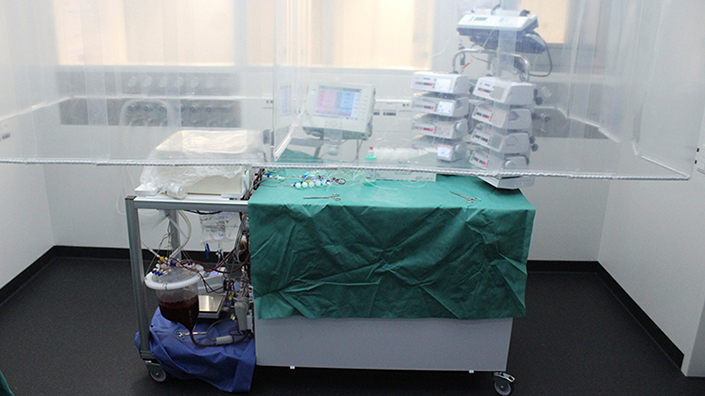Engineering news
The device, developed by researchers in Switzerland, also includes dozens of parameters that can be remotely controlled to help the organs heal and survive.
Professional Engineering contacted the team from University Hospital Zurich (USZ), ETH Zurich, Wyss Zurich and the University of Zurich for more information after the machine was unveiled earlier this week (13 January). An announcement described the work as a “major breakthrough” that could lead to an increase in organs available for transplantation and save the lives of patients with severe liver diseases thanks to the length of perfusion it can sustain outside of the body – the previous maximum limit was roughly one day.
“It simulates the human body – the heart with a pump, kidney with a dialysis system, lung with an oxygenator – then we feed the system and have a circulating blood loop and a small reservoir,” Dr Philipp Rudolf von Rohr from ETH Zurich told Professional Engineering. “We control around 50 parameters online. A new sensor is being used for the sugar control.”

The perfusion device can reportedly repair injured livers and keep them alive for a week (Credit: USZ)
The team achieved the significant increase in timescale thanks to a combination of “adjusted” mechanical parts and the medical treatment itself, said Dr von Rohr. The researchers searched for the centrifugal pump with the lowest possible speed to avoid damaging the blood through shear forces or warming it up. Throttling valves adjust the pressure in different locations.
As well as simulating some of the body’s vital organs, Dr von Rohr said the machine also replicates the movement the liver naturally undergoes in the body, with a pneumatic system simulating the diaphragm.
The loop is also kept at a constant temperature with a thermostat. The system can run for days “almost without personnel”, said Dr von Rohr.
He also confirmed that it is transportable, like the earlier Metra device from University of Oxford spin-out OrganOx. The Zurich machine has an integrated power supply system and computer to preserve the organ inside.
The first study with the device found that six of 10 ‘poor-quality’ human livers recovered to full function within one week of perfusion, despite initially being declined for transplantation ‘by all centres in Europe’. They can now be used for transplantation.
The research was published in Nature Biotechnology.
Want the best engineering stories delivered straight to your inbox? The Professional Engineering newsletter gives you vital updates on the most cutting-edge engineering and exciting new job opportunities. To sign up, click here.
Content published by Professional Engineering does not necessarily represent the views of the Institution of Mechanical Engineers.